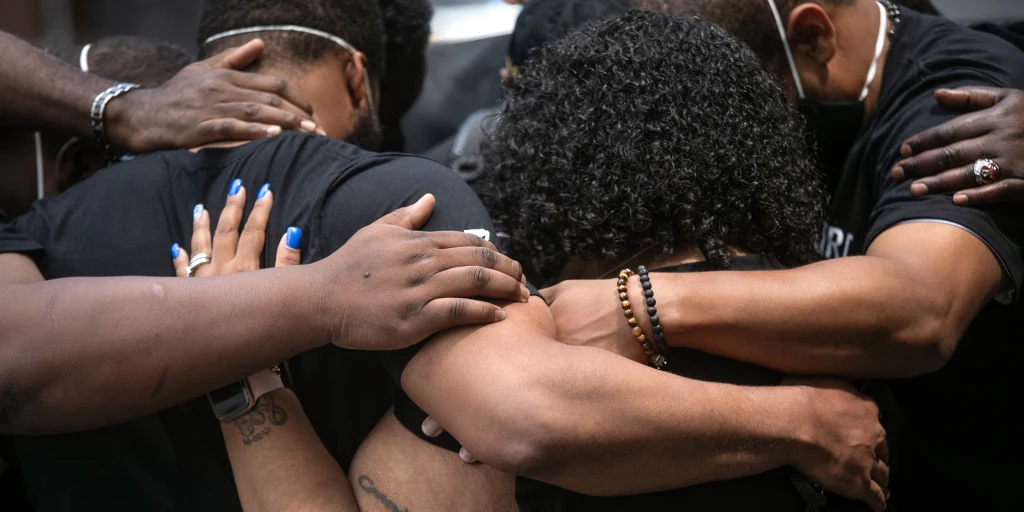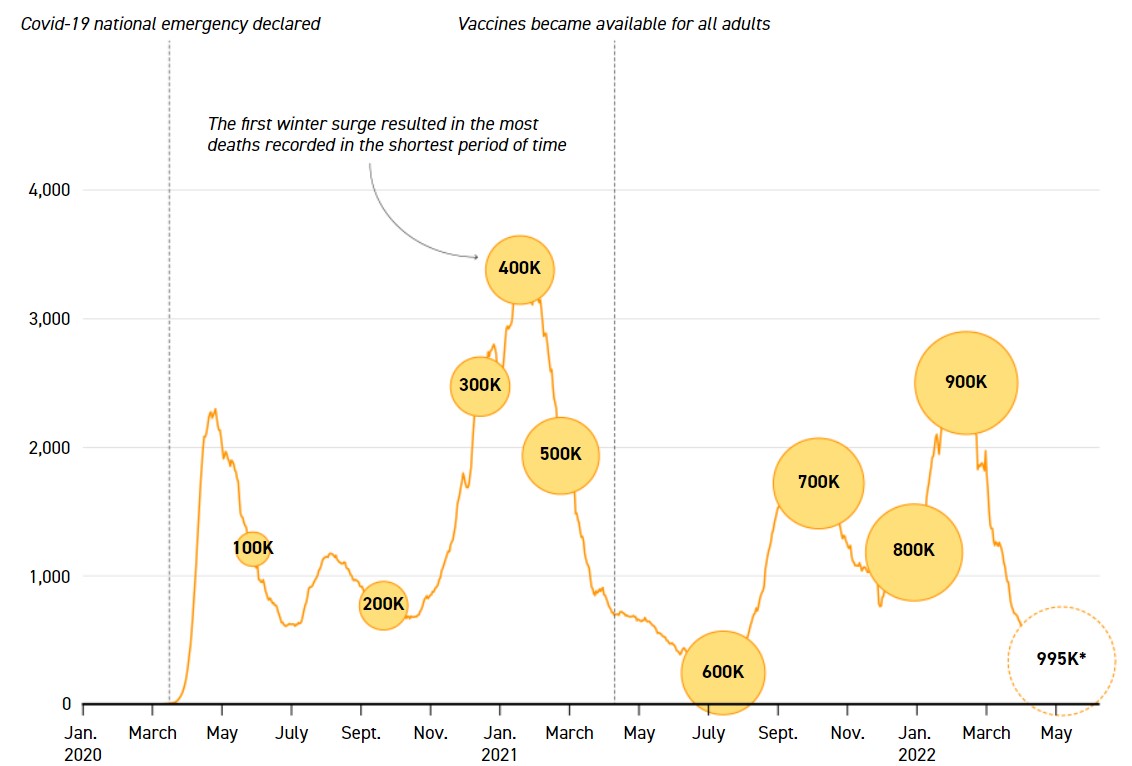
It’s a number many Americans have grimly expected but may still find hard to comprehend: Over one million of their fellow citizens killed by COVID-19.
“Today, we mark a tragic milestone: one million American lives lost to COVID-19,” President Joe Biden remarked in a speech posted Thursday morning on the White House website. “One million empty chairs around the dinner table. Each an irreplaceable loss. Each leaving behind a family, a community, and a Nation forever changed because of this pandemic. Jill and I pray for each of them.”
Biden ordered that U.S. flags be flown at half-staff Thursday in honor of those lost.
“As a Nation, we must not grow numb to such sorrow,” Biden said. “To heal, we must remember. We must remain vigilant against this pandemic and do everything we can to save as many lives as possible.”
According to data compiled by NBC News, the U.S. passed the 1 million mark earlier this month, reaching a number equivalent to the population size of San Jose, California, the 10th largest city in the U.S. As of Wednesday, COVID-19 deaths in the U.S. had reached 1,002,848, according to data.
Those who lost their lives to COVID were mostly old; disproportionately low income, Black or Hispanic; and overwhelmingly unvaccinated. People who did not get the shot were 53.2 times more likely to die than fully vaccinated and boosted people, the Washington Post notes.
Although COVID-related deaths have slowed in recent weeks, an average of 481 people were dying on a daily basis as of Wednesday. This represents a two-week increase of roughly 41 percent, according to an analysis by NBC News. And according to Dr. Christopher Murray, who heads the Institute for Health Metrics and Evaluation at the University of Washington School of Medicine, the death toll will continue to grow.
“This is far from over,” Murray says.

Source: CDC
Is a lack of communication the cause?
The first fatal case reported to the CDC occurred in Washington state on Feb. 29, 2020, although more recent investigations now suggest that the first American deaths may have occurred in early January of that year.
Dr. William Schaffner is medical director of the National Foundation for Infectious Diseases. He points to mixed messages and incomplete data that kept many Americans from taking steps that might have saved lives.
Communication is crucial in a pandemic, Schaffner says, and the United States failed to issue clear explanations and instructions as COVID surged across the nation.
“It became very political,” Schaffner adds. “In the very same press conference, you would have political leaders saying one thing and then public health leaders three minutes later saying something 180 degrees different. And that went on and on, causing an incredible amount of








